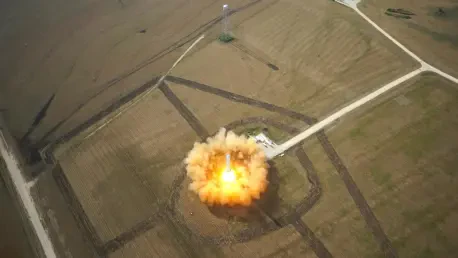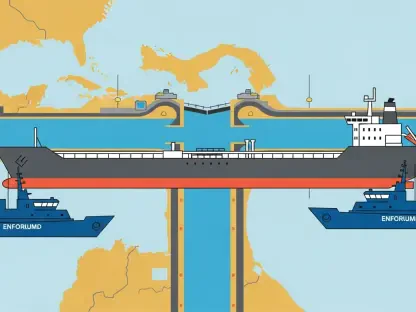As winter’s chill begins to bite across Ukraine, a darker shadow falls from the sky—relentless Russian air strikes that tear through cities and lives with horrifying precision, leaving a nation under siege. In just one week, nearly 1,500 attack drones and over 70 missiles have rained down, targeting not just military outposts but the very heart of civilian existence. This escalating violence, striking at a time when warmth and shelter are most critical, paints a grim picture of a nation under siege. What drives this brutal surge, and how are Ukrainians enduring under such unrelenting pressure?
A Nation Gripped by Fear: The Rising Terror of Aerial Assaults
Across Ukraine, the sound of air raid sirens has become a chilling soundtrack to daily life. Overnight attacks in the southern Odesa region left two dead as cargo trucks, symbols of commerce and survival, were reduced to wreckage. Meanwhile, in Dnipropetrovsk, a shop engulfed in flames from a Russian strike claimed four lives, including two young boys, shattering families and communities. These incidents are not isolated; they reflect a pattern of destruction that spares no corner of the country, leaving civilians to wonder where safety might still exist.
The toll of these strikes extends beyond immediate casualties. Each missile and drone carries the weight of fear, disrupting sleep and stability for millions. Residential buildings, once havens, now stand as potential targets, with shattered windows and crumbling walls bearing witness to the violence. As winter deepens, the psychological strain of living under constant threat compounds the physical challenges, pushing Ukrainians to the brink in a conflict that shows no mercy.
The Cold Calculus: Why Winter Amplifies the Stakes
With temperatures plummeting, Russia’s strategy appears calculated to exploit Ukraine’s vulnerability. Strikes on energy infrastructure have plunged nearly 60,000 people in Zaporizhzhia into darkness, while the entire Donetsk region grapples with emergency blackouts. These are not mere military maneuvers; they are designed to erode the will to resist by stripping away basic necessities like heat and light. The timing is no coincidence—winter’s harshness becomes a weapon in itself, intensifying the struggle for survival.
This deliberate targeting of power systems reveals a broader intent to destabilize. Without electricity, hospitals falter, communication lines fail, and homes turn into frigid traps. The impact ripples through every aspect of life, from accessing clean water to preserving food supplies. For Ukraine, enduring these months means not just battling an enemy on the battlefield but also fighting to maintain the fabric of society against a backdrop of calculated cruelty.
Destruction Across Borders: A Regional Toll of Loss
The devastation paints a harrowing map across Ukraine’s diverse regions. In the southeast, Zaporizhzhia’s power outages have left tens of thousands grappling with uncertainty, their daily routines upended. Northern Chernihiv and northeastern Kharkiv report similar disruptions, with entire neighborhoods cut off from essential services. Each area bears unique scars, yet the common thread is clear: civilian infrastructure is under systematic attack, with no sanctuary in sight.
Eastern Donetsk, a focal point of Russian ground offensives, faces perhaps the direst situation, with total blackouts crippling the region. Energy facilities, critical for survival, have been obliterated, leaving residents to navigate an unforgiving winter without relief. These regional snapshots highlight a national crisis—every strike chips away at Ukraine’s ability to function, turning cities into battlegrounds where even the act of living becomes an act of defiance.
Echoes of Despair: Leadership and Data Reveal the Scale
Ukrainian President Volodymyr Zelenskyy has not minced words in describing the onslaught, stating that the barrage of nearly 1,500 attack drones, 1,170 guided aerial bombs, and over 70 missiles in a single week amounts to terror, not warfare. His stark assessment resonates with the reality on the ground, where residential zones and civilian hubs bear the brunt of the damage. These figures are more than statistics; they represent lives upended and futures stolen.
Emergency crews, often working under the threat of further strikes, paint a vivid picture of the struggle. In regions like Donetsk, they battle rolling blackouts while trying to restore power, their efforts hampered by constant danger. Despite official denials from both sides about targeting civilians, the death toll—thousands, mostly Ukrainians, since the conflict’s escalation—tells a different story. This grim data underscores a crisis that demands global attention, as the line between military and civilian targets blurs beyond recognition.
Battling the Odds: Ukraine’s Struggle to Hold On
In the face of such adversity, Ukraine’s response is a testament to resilience. Emergency teams race against time to repair damaged energy grids in Zaporizhzhia and Donetsk, often under the shadow of incoming strikes. Their work is a lifeline for communities teetering on the edge, restoring flickers of hope amid the darkness. Yet, the scale of destruction means that full recovery remains a distant goal, with every fix a temporary shield against the next attack.
On a grassroots level, citizens are urged to brace for the worst, stockpiling batteries, candles, and portable heaters to weather prolonged blackouts. Ukrainian officials, meanwhile, focus on safeguarding what remains of the energy infrastructure while seeking international aid to bolster defenses. These measures, though vital, are mere stopgaps in a conflict with no clear resolution. Still, they chart a path of endurance, offering a blueprint for navigating the brutal months ahead as winter tightens its grip.
Reflecting on a Dark Chapter
Looking back, the ferocity of Russian air strikes had transformed Ukraine’s landscape into one of loss and perseverance. The targeted destruction of energy systems and civilian spaces had left an indelible mark, with entire regions plunged into darkness during the harshest season. Each casualty, from Odesa to Dnipropetrovsk, had underscored the human cost of a war that refused to relent, etching stories of grief into the nation’s memory.
Yet, amid the wreckage, there had been a quiet resolve to rebuild and resist. Moving forward, the international community faced a pressing need to amplify support, whether through humanitarian aid or strengthened defenses, to shield Ukraine from further devastation. Beyond immediate relief, diplomatic efforts had to be reignited to seek an end to the violence, ensuring that future winters would not be defined by terror from the skies, but by the promise of peace.









